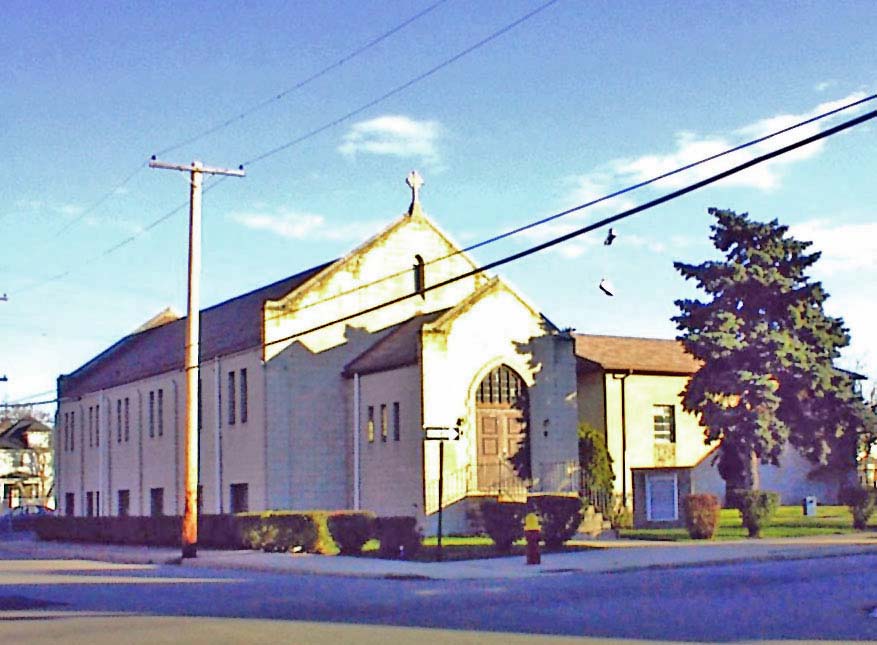

St. Matthews was
the first African-American Episcopal Church in Detroit. It was founded on the
east side by the Reverend William Monroe
and seven other
fugitive slaves in 1846. The first sustained growth of the black population
in Detroit occurred during World War I. Most black immigrants settled on the
east side along Hastings Street, but a small community established themselves
on the west side between Warren and Tireman. This included a few black Episcopalians
who made the long trip to St. Matthews at 2019 St. Antoine for their worship.
Among them was Mrs. Nellie Warren whose son, Francis, was a cripple, so their
trip to St. Matthews was not easy. They and other black Episcopalians on the
west side requested that St. Matthews find a place for them to worship closer
to their homes.
While Episcopalians in Detroit—and most other northern cities—maintained
Jim Crow churches, where both the white and black congregations were supervised
by the same bishop. Apparently, the pastor at St. Matthews thought that he
had worked out an arrangement with the pastor of the white Episcopalian church
at Warren and 28th—St. James. Presumably, black Episcopalian parents
and their children would be welcome to hold racially segregated Sunday school
meetings
in the basement of St. James. When the African-Americans arrived to hold their
first Sunday school meeting at St. James, they were blocked from entering the
church. They petitioned the bishop for the establishment of an African-American
Episcopalian church on the west side of Detroit. In October of 1919, the diocese
agreed to create a missionary church. Services were held, I believe, in a variety
of buildings. As blacks continued to migrate to Detroit for industrial jobs,
the population in this west side community increased. Further evidence of this
is the prosperous and attractive St. Phillip's African Methodist Episcopal
church at 6000 Stanford. I infer that African Americans living in this west
side enclave were, generally, more prosperous than those living along Hastings
street on the east side. The missionary St. Cyprian's parish sought money from
the diocese to construct their own church. Finally, in 1936, the diocese agreed
to provide one-half the cost of the church, with a limit on total cost of $25,000.
To save on architectural costs, I believe this church resembles Emanuel Episcopal
Church located at John R and Greendale. The church you see in the picture above
was dedicated on September 25, 1938. It is much more modest than many of the
gracious Episcopalian churches found throughout the metropolis, perhaps because
it was built in the Depression decade with the dioceses insisting upon a low-cost
building. In 1940, St. Cyprian's moved beyond its missionary status and became
a regular parish. From the 1940s to the 1960s, Reverend Dade was the
pastor here, a political and civil rights activist who was the only clergyman
elected to the state constitutional convention in 1962. St. Cyprian's was the
mother church for the first African American Episcopalian church established
in Ecorse—Church of the Resurrection.
Why does this church have the name St. Cyprians? Cyprian's date of birth is
unknown, but he apparently was born in Carthage and became a successful business
person and administrator. In mid-life, he began to take instructions in Christianity
from a priest by the name of Caecilianus. He became a Christian and was baptized
on April 18, 246. At this time, the Christian church was striving for recognition
from the Roman Empire, but various emperors saw it as a rival and tried to
drive it out of existence. Cyprian was appointed the bishop of Carthage, but
was martyred
by the Roman administration on August 14, 258. As bishop he established a reputation
as an orator, and wrote extensively about theological issues. The Christian
church, of course, was still defining itself and its theological beliefs at
that time, so Cyprian contributed to the development of Christianity. Apparently,
at least four of his books and 81 letters survive and were carefully scrutinized
by students of theological and church history over the centuries. I do not
know St. Cyprian's skin color. Then, as now, a variety of different skin colors
were common among the residents of Mediterranean Africa. Race was apparently
of such little concern in the Roman Empire that it was not often recorded.
In any event, the contributions of St. Cyprian to modern Christianity are honored
in this modest but attractive church at 28th and Milford in Detroit.
Architect: Unknown to me
Architectural style: Unembellished Gothic Revival
Date of completion: 1938
Use in 2007: Episcopalian Church
National Register of Historic Sites: Not listed
State Registry of Historic Sties: Not listed
City of Detroit Local Historic District: Listed: October 17, 1983
Website: http://www.scypriansdet.org
Photo: Ren Farley
Description: Revised April, 2007
Return to City of Detroit Historic Designations